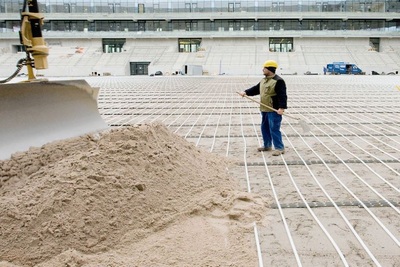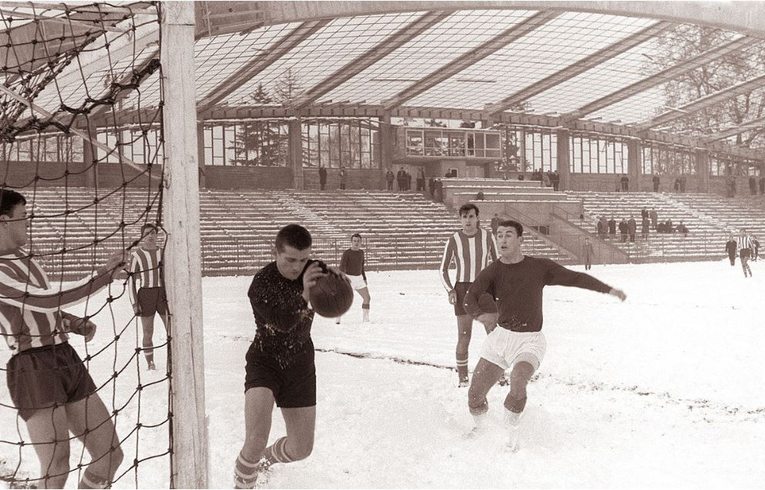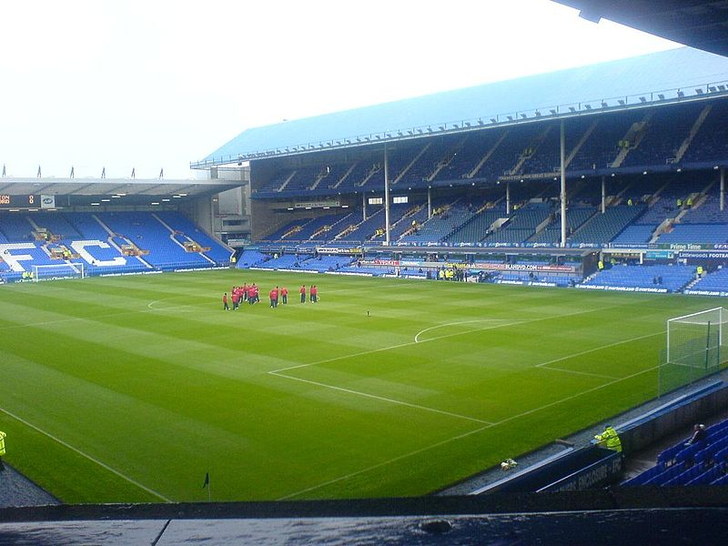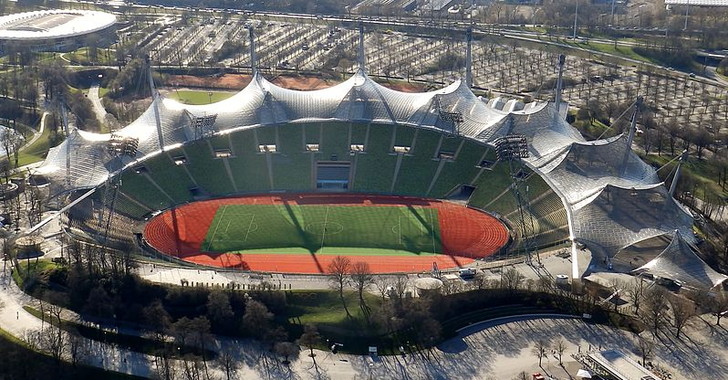
There are many aspects of life in a football club that go unnoticed and barely get spoken about. The people whose job it is to serve you beers and food at half-time, for example, or the amazing job done by security staff and police in difficult circumstances.
But arguably one of the most important things is something that is used virtually all the time in the winter months and we can’t even see it happening.
Undersoil heating has been used by football clubs for decades. It is the secret weapon of groundskeepers throughout the country and when the weather takes a turn for the worse it kicks in, helping to keep matches on and ensuring that pitches are in tip-top condition.
But when did it first come into play? Which team was the first to use it? Is it a compulsory thing for clubs to have? We’ve taken a look at one of the unspoken heroes of football.
Before Undersoil Heating

Undersoil heating may well be taken for granted nowadays, but what did football clubs do about cold weather before it was invented? Genuinely ludicrous things, is the honest answer. Obviously when football was first starting to gain popularity nothing at all would be done. Clubs would either play on pitches that were rock hard and freezing cold thanks to the weather or else matches would be abandoned until the weather was more suitable.
Once clubs started charging people money to come and watch their matches they realised that abandoning matches was not a suitable way of working as they would lose too much money. Instead they tried to find ways to keep the matches on by stopping the pitch from defrosting. In the 1920s, for example, Tottenham Hotspur decided to attempt to stave off the frost by putting bales of hay all over the pitch. It didn’t work, obviously, and instead the pitch looked like a farmyard.
In the 1970s the notion of undersoil heating became more and more popular, but the method of doing it wasn’t always the same. Many clubs installed large pipes under the turf that would run hot water through them in order to melt the frost above. This was an incredibly expensive method of heating the soil, however, and didn’t always work.
Perhaps one of the most bizarre methods came about in 1971 when Leicester City paid £5000 for a giant tent, called a poylsphere, to be installed over the Filbert Street pitch. This was essentially a giant polythene tent that was kept afloat with giant blowers. It allowed the pitch to be kept at a permanent temperature whilst the players could also train on it underneath the big tent. Somewhat unsurprisingly it didn’t catch on.
The Introduction Of Undersoil Heating

Everton may not be famed for winning trophies in the modern era of football but one thing the club prides itself in is being forward thinking. After all, Goodison Park was the first purpose-built football stadium in the world. It’s no surprise, then, that the Toffees were also the first team in the country to install undersoil heating; something that they did in 1958.
The Goodison turf was lifted up and about twenty miles, which is around thirty kilometres, of electric wire was laid down. It cost the club around £16,000 to do initially, with more problems discovered after it started being used. It turned out that it was a much more effective system than anyone had anticipated, meaning that the draining system wasn’t able to cope with the the new quantity of water coming in from melted snow and frost. In 1960 the pitch had to be relaid to allow a new drainage system to be installed.
The success of the system at Everton’s ground wasn’t an immediate catalyst for all clubs to begin installing similar things, however. Arsenal installed an electric system in 1964 before upgrading it to a hot water system in 1970, Leeds United installed one in 1968 and Everton’s city rivals Liverpool didn’t bother putting their system in until 1980.
Premier League Rules

In Germany clubs in the Bundesliga and 2. Bundesliga have to have undersoil heating installed as a rule. The first ground to do so was the Olympic Stadium in Munich, which installed a system in 1972. But what of the Premier League in England? Do they have similar rules to Germany?
On that there remains some confusion. The Premier League’s rules are suitably vague enough to mean that clubs can get away without it should they not wish to go to the expense of getting it installed when there’s no guarantee that they’ll remain in the top-flight for very long.
The English Football League’s rulebook states: “Each Home Club shall provide full pitch frost covers and/or under soil heating (the specification of which shall meet the reasonable satisfaction of The League) which shall be operated to the extent necessary to procure, so far as it is reasonably possible, that the pitch is playable on the occasion of each match”.
The Premier League has similar wording in its rulebook, stating that pitches need undersoil heating or “some other adequate system of pitch protection to the reasonable satisfaction of the board”. But what exactly classes as an ‘adequate system’ is not something that is set in stone.
Back in 2006 matches at Ewood Park and Bolton’s Reebok Stadium were abandoned after a heavy frost and a Premier League spokesman confirmed that the matter would be investigated as “It is a specific rule in the Premier League that clubs must have undersoil heating”. Yet when Blackpool had to abandon three matches in 2010 due to temperatures reaching minus nine overnight their club secretary said, “It is not a Premier League regulation [to have undersoil heating]”.
However when Bournemouth gained promotion to the top-flight in 2015 they opted against developing parts of the ground and decided to install undersoil heating instead. This was because they felt the Premier League had ‘strict rules’ regarding such things. The wording may be vague but what does seem clear is that the Premier League rules seem to suggest it’s up to you what type of system you have in place but you better not need to call a game off because your pitch is frozen…
